Instruments - EnVision
EnVision payloads and experiments
The EnVision mission will embark 5 instrumets and one radioscience experiment. The instruments and the experiment, using the Satellite radiolink, are designed to observe different parts of the Venus system.
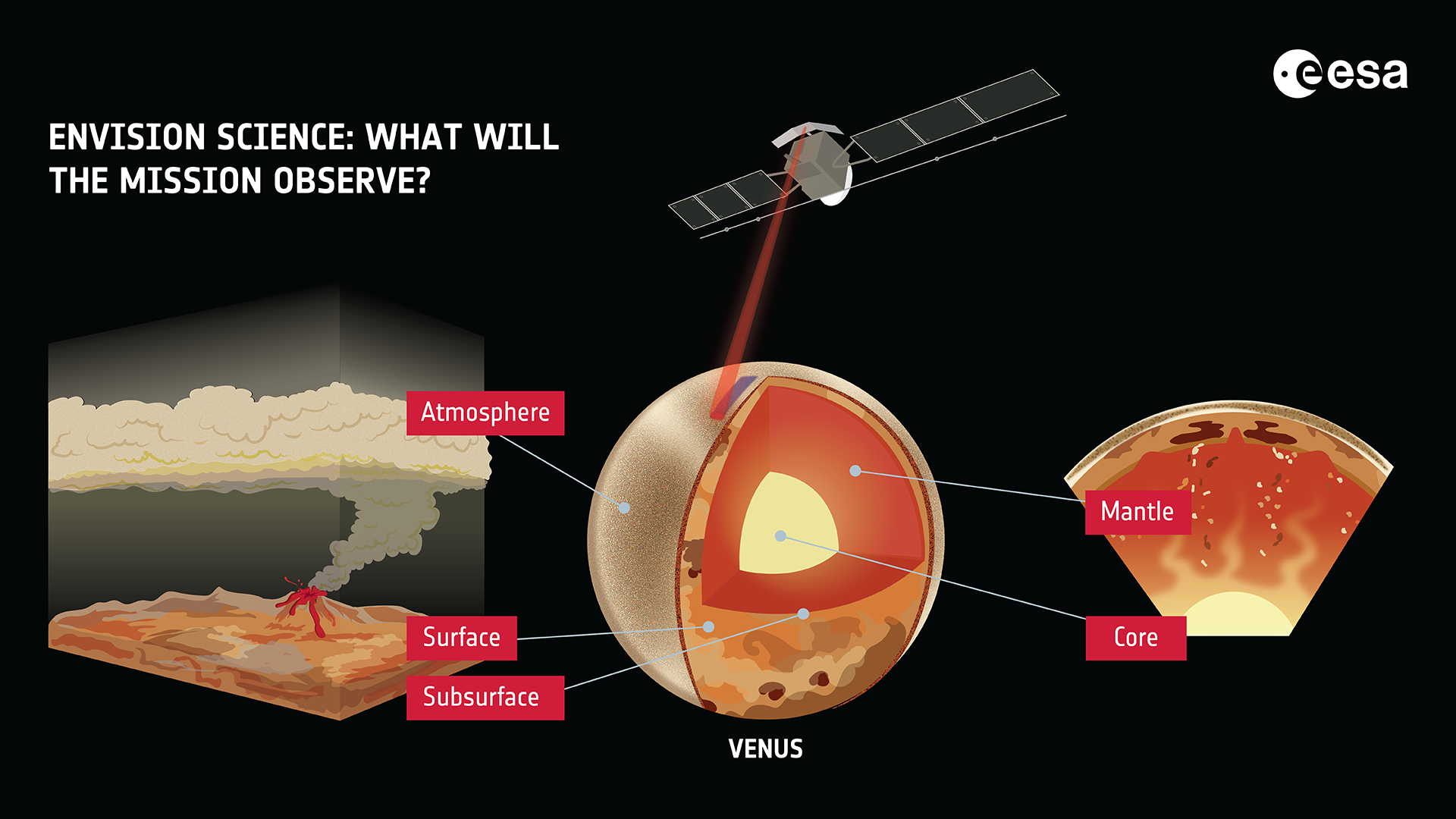
Venus Synthetic Aperture Radar (VenSAR)
VenSAR (Venus Synthetic Aperture Radar) will characterize structural and geomorphic evidence of multi-scale processes that shaped the geological history of Venus as well as characterize current volcanic, tectonic, and sedimentary activity. The proposed VenSAR primary instrument operates at 3.2 GHz in the S band (9.4 cm wavelength) from a polar orbit with an acquisition strategy that focuses on high resolution studies (30 m/pixel, and subregions at 10 m/pixel) of select areas. VenSAR will perform stereo imaging, as well as collect observations for radiometry, scatterometry, and polarimetry.
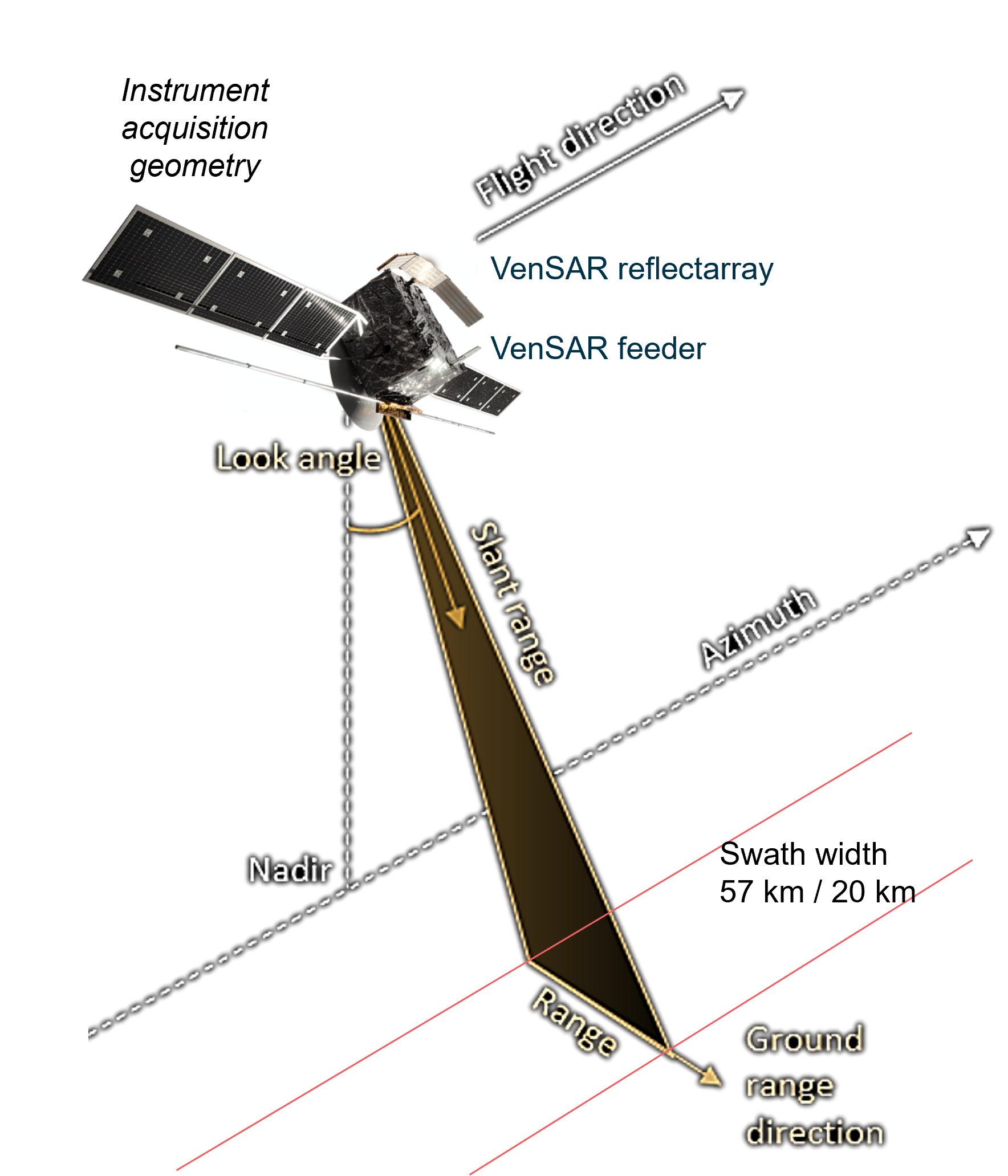
VenSAR observation geometry.
Subsurface Radar Sounder (SRS)
SRS (Subsurface Radar Sounder) will be the first instrument to profile the subsurface of Venus and thus will acquire fundamental information on subsurface geology by mapping the vertical structure (mechanical and dielectric interfaces) and properties of tesserae and their edges, plains, lava flows and impact craters and debris, thus providing useful data for inferring the genesis of these features. It also provides information on the surface in terms of roughness, composition and permittivity (dielectric) properties at wavelengths much longer than those of VenSAR, thus allowing a better understanding of the surface properties. SRS also obtains altimetry measurements by providing low-resolution profiles of the topography that can be integrated with the altimetric data of VenSAR.
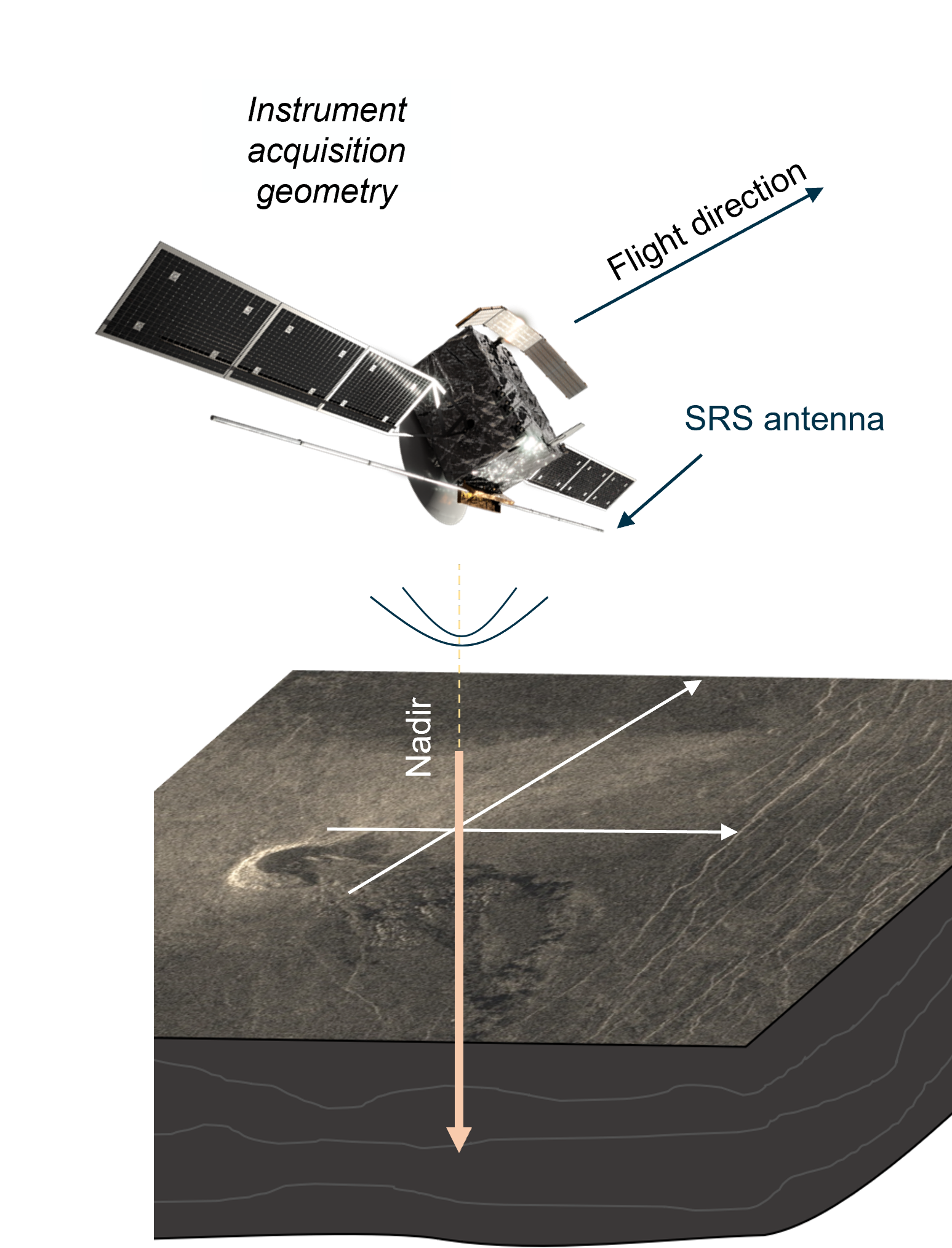
SRS observing geometry.
VenSpec-M
VenSpec-M (Venus Spectrometer – Infrared Mapper) is a pushbroom multispectral imaging system which will provide near-global compositional data on rock types, weathering, and crustal evolution by mapping the night-side emission of Venus surface and lower atmosphere in 14 near-IR spectral transparency “windows” at 0.86-1.18 μm. A total of six bands sound the surface in the five atmospheric windows. The broadest “window” at 1.02 μm is covered with two filters to obtain information on the spectral slope of the surface reflectance within the “window”. Eight additional channels provide measurements of atmospheric water vapour abundance as well as cloud microphysics and dynamics and stray light, permitting an accurate correction of atmospheric interference on the surface data. Continuous observation of Venus’ thermal emission in the surface windows will place tight constraints on current day volcanic activity.
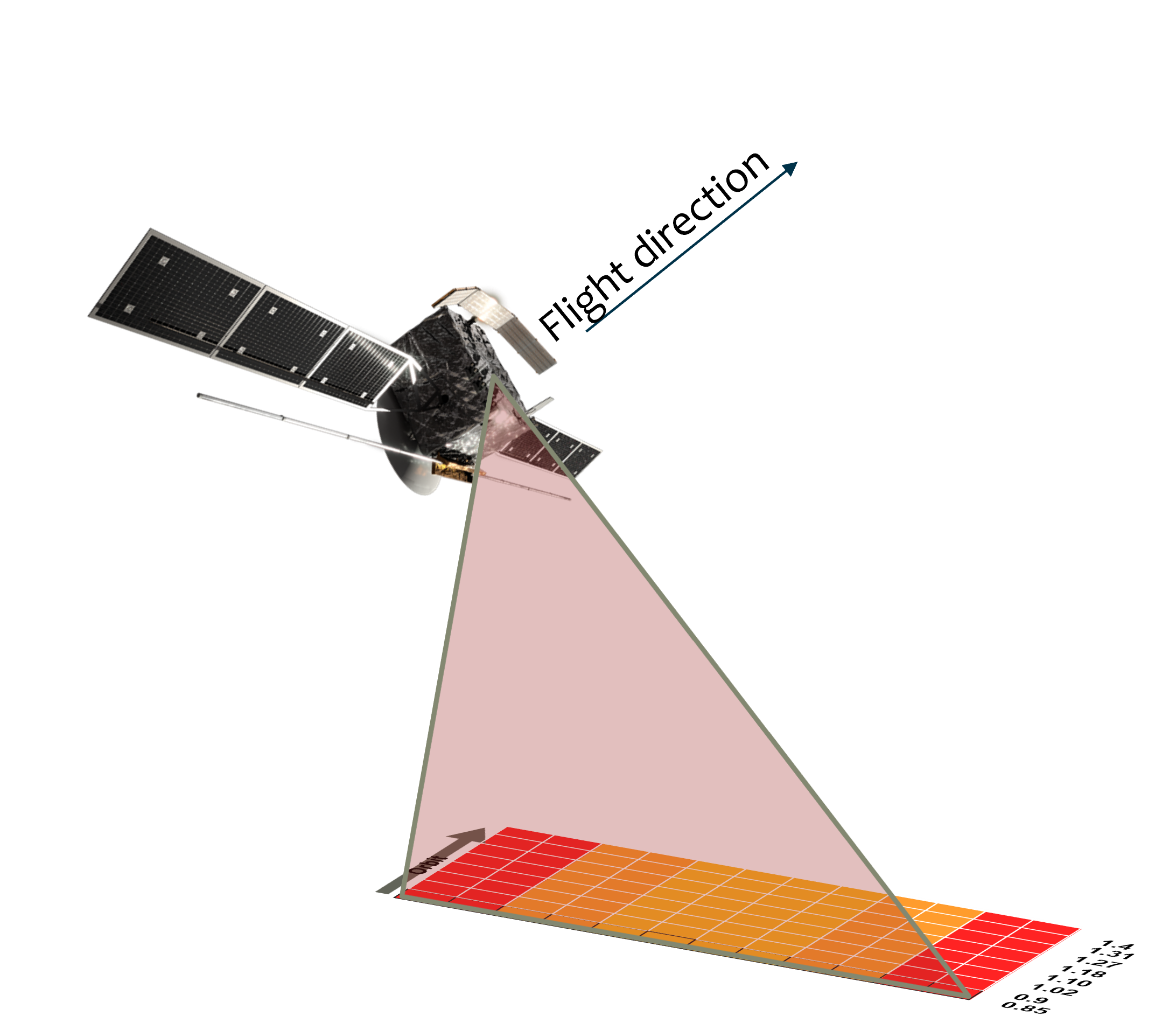
VenSpec-M observing geometry.
VenSpec-H
VenSpec-H (Venus Spectrometer with High resolution) is one of the three spectrometers that make up the EnVision VenSpec Suite. Like the other two spectrometers, VenSpec-H will primarily observe in nadir, observing the part of the atmosphere directly below the spacecraft. It will observe on both the dayside, measuring sunlight that is reflected off the atmosphere, and on the nightside of the planet, measuring radiation that is emitted from Venus.
By observing both day and night, VenSpec-H will be able to map the composition of minor species both in the lower atmosphere and above the clouds. Specifically, VenSpec-H will focus on the volcanic and cloud forming gases and search for composition anomalies potentially related to the volcanic activity or to surface changes.
To achieve this, VenSpec-H needs to be able to look through the atmosphere, and so the spectrometer will observe in four spectral windows in the near-infrared region of the spectrum, where the atmosphere is more transparent. These are:
- Band 1: 1.16 - 1.18 µm
- Band 2: 2.34 - 2.48 µm (divided into two ranges: 2.34 - 2.42 µm (Band 2a) and 2.45 - 2.48 µm (Band 2b))
- Band 3: 1.72 - 1.75 µm
- Band 4: 1.37 - 1.39 µm
Band 1, 2 and 3 will be used to observe the night side, while bands 2 and 4 will probe the dayside.
The high spectral resolution (with a resolving power of ~8000), along with the high sensitivity of the instrument, will allow scientists to clearly distinguish and measure the strengths of absorption features of the targeted species.
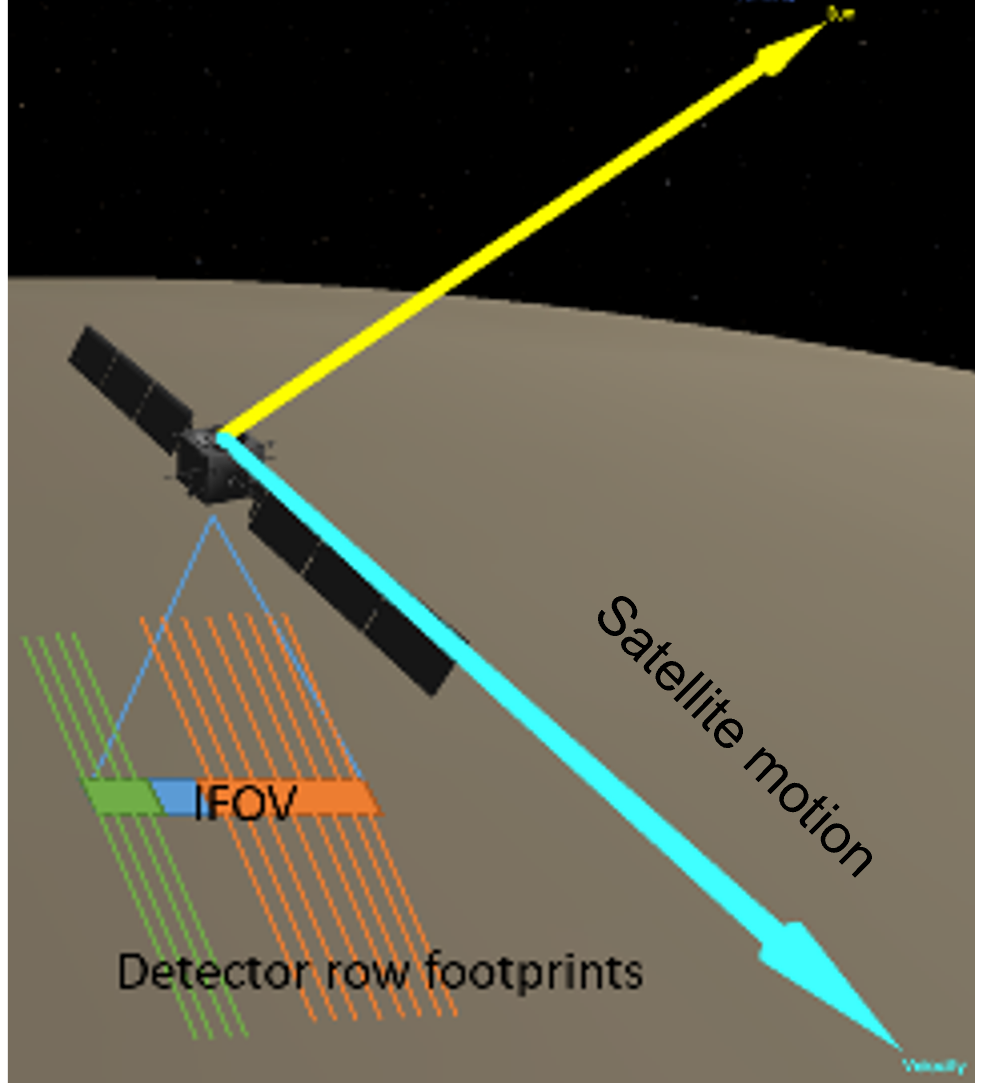
VenSpec-H observing geometry.
VenSpec-U
The VenSpec-U experiment (Venus Spectrometer – Ultraviolet) will map distribution and spatial and temporal variations of sulfur bearing gases (SO, SO2) and unknown particulate absorber at the cloud tops. Sensitive to the UV sunlight scattered by Venus’ cloud top, absorption bands allow the detection of (SO+SO2) near 215 nm and SO2 at 280 nm. EnVision will investigate the upper atmosphere using the following wavelength ranges and resolutions: (1) 205-235 nm at 0.2 nm spectral resolution (SO2 and SO separately at 70-80 km); (2) 190-380 nm at 2 nm spectral resolution (UV absorber, total SO+SO2 at 70-80 km). Performed on a daily basis, 4-5 successive observations over the same ground spot will constrain coupling between surface (volcanic activity, topographic features) and cloud top level measurements.
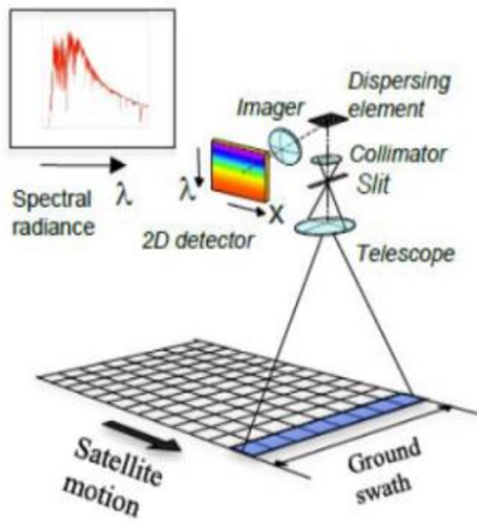
VenSpec-U observing geometry.
Radio Science Experiment (RSE)
Gravity experiment. The gravity experiment aims at mapping of the Venus gravity field with 150-200 km spatial resolution (~120 degree strength) and thus determining interior structure. The experiment will use the 2-way mode with an X-band uplink and a dual X-Ka band frequency downlink in order to reduce the noise on the frequency measured at the ground station resulting from the interplanetary plasma. The Doppler shift of the received frequency with respect to the transmitted frequency will be used to monitor the velocity variations of the spacecraft in order to precisely reconstruct its trajectory around the planet. The orbital velocity perturbations are then inverted to reconstruct the gravity field of Venus (including the tidal component, the k2 Love number). The space segment of the experiment is the onboard transponder used for telemetry and radio-navigation and the high gain antenna. The ground segment are Earth’s based ground stations, which record the phase of the downlink signal and extract the Doppler shift of the received carrier frequency.
Radio-occultation experiment. The radio-occultation experiment aims at sounding of the temperature structure of the Venus atmosphere in the altitude range 90-35 km and abundance of sulfuric acid in gaseous and particulate phases. The experiment relies on the observation of the radio-link propagation (frequency and amplitude) through the atmosphere of Venus during radio-occultation. The experiment is performed in the 1-way mode and therefore requires an Ultra-Stable Oscillator (USO) onboard the spacecraft. The radio ray path changes in the ionosphere and neutral atmosphere are induced by a change in the refractivity profile. This leads to a shift in the measured frequency at the ground station. These frequency changes can be used to retrieve the neutral number density, temperature and pressure profiles as a function of the planetary radius at a high vertical resolution. The recording of the absorption of the radio waves at the base of the clouds and below in both X- and Ka-band will allow to estimate sulfuric acid abundance in both gaseous (down to 35 km) and particulate (~50 km) phases.
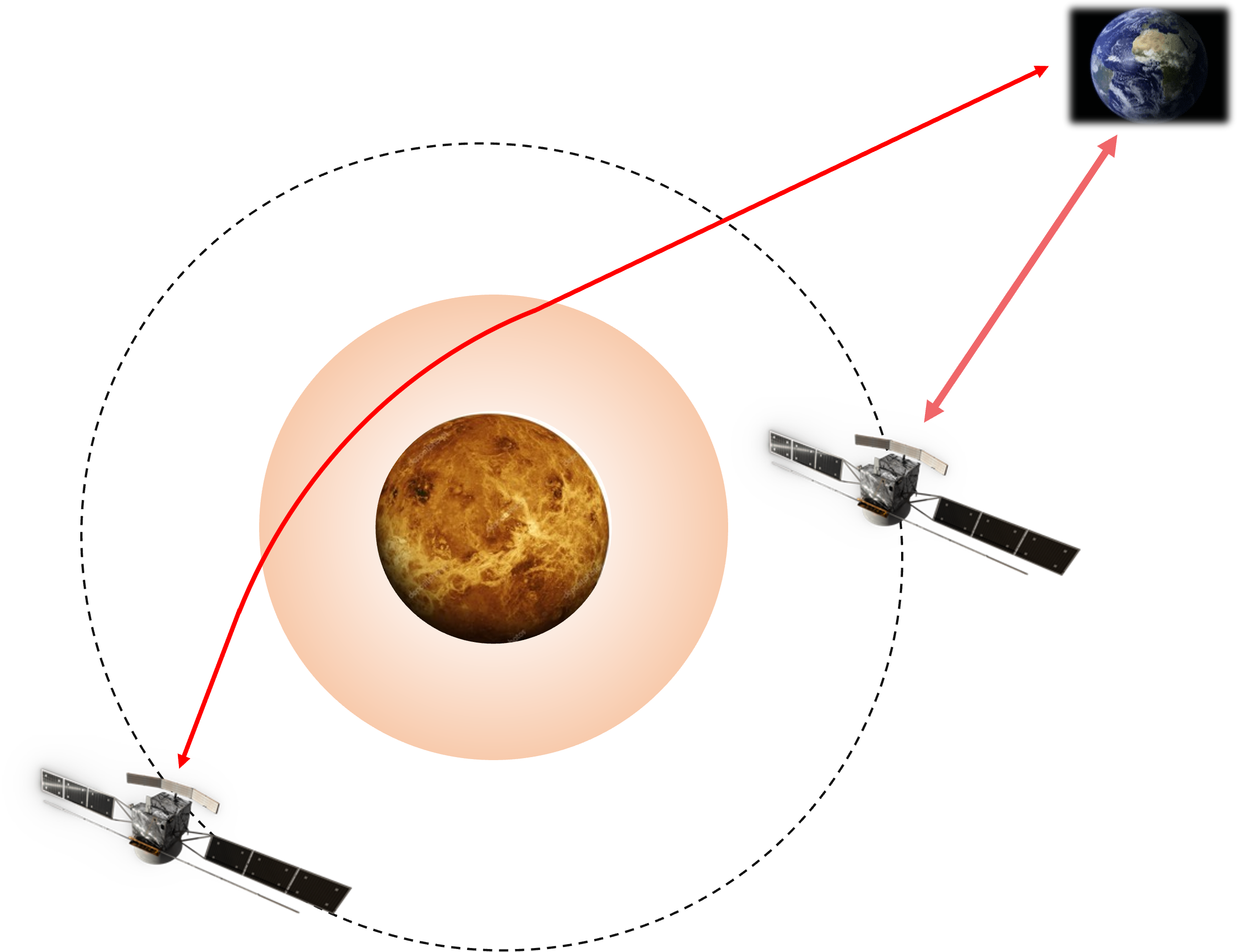
Radio Science Experiment (RSE) observation geometry.
- Removed a total of (12) style text-align:center;
- Removed a total of (6) style text-align:right;
- Removed a total of (6) style margin:0;








































 Sign in
Sign in
 Science & Technology
Science & Technology